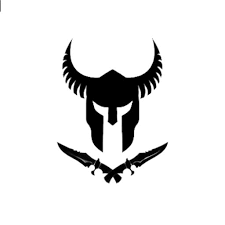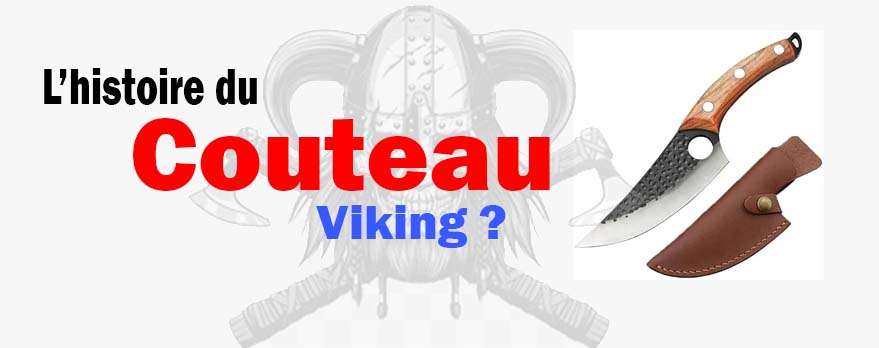Do you want to know more about the historical Viking knife? How and with what it was forged at the time ?
Know, young Vikings, that you are in the right place for that.
Summary
ToggleWe have experts in this field who are eager to write an article answering all your questions.
Get ready, my fellow Norsemen. Skål!!
But first, it’s important to write a brief summary about knives in general and how they were invented. Trust me, it will help you better understand the article !
The Birth of a Sharp Tool
The first knives were invented by homo sapiens in prehistoric times and were used as weapons, tools, and kitchen utensils. These were the stone knives.
Stone knives remained in use for a very long time and only began to advance during the Neolithic period, lasting for about seven to four thousand years.
– Inventing a Weapon of War
The advent of the Bronze Age (700 to 3,000 BCE) allowed metallurgists to craft knives from copper and bronze. During this time, the shape of the knife was primarily intended for warfare.

Metal knives were designed to be sturdy, much like wooden knives. The edge always faced upwards, not downwards as our usual knives do.
– The Emergence of the Historical Viking Knife
With the advent of the Iron and Steel Age in the Western world, knives became commonplace among all classes of people, from high medieval nobles to poor laborers and farmers. This is where the Viking knife comes into play.
Deeply rooted in Scandinavian history, the Seax, also known as the “Historical Viking Scramasaxe” or “Sax,” was the blade shape of choice for the Vikings, who were both greatly feared and revered.

The Scandinavians were generally associated with their famous axes, but in truth, they also carried a more general-purpose knife :
The true historical Viking knife, notably known as the seax.
The Origin of the Historical Viking Knife
Scandinavians typically lived in villages, cultivated the land, and raised animals. In such an agrarian society, they also needed sharp tools to help with farming and harvesting the fruits of their labor. That’s where the knife played a significant role.
How Vikings Forged the Knife in the Past ?
Their personal knife was called the seax, and it never left their side. This knife served a myriad of tasks, from butchering a freshly captured deer to cutting turnips pulled from the ground, all with the same knife.
Crafted traditionally with their ancestral customs from Norse mythology, it acquired a multifunctional appearance, easily maneuverable thanks to its sharp blade forged with carbon produced from the bones of war casualties. A technique discovered by the Viking Forge. Subsequently, this curved blade is seamlessly infused into a wooden handle. Today, artisans descended from Nordic countries have tried to create blades to pay homage to their ancestors.
– Viking Artisanal Knife
This small, sharp artisanal Viking pocket knife is truly a blade for all seasons, easily tackling a variety of tasks :
- Harvesting fruits and vegetables in the morning.
- Repelling enemies after lunch.
- Then preparing dinner in the evening.
All with a Viking pocket knife. It had to be a versatile utility tool capable of chopping, cutting, slicing, and sometimes stabbing, all with the same ease of use. Impressive, isn’t it? After sharpening it, everything becomes easy to cut.
– Is It a Combat Weapon ?
The knife could also be used as a Viking self-defense weapon if needed. In close combat after missing with an axe, a Viking knife with its precise and powerful blade tip, marking capability, and ability to penetrate the enemy is of great help as an emergency weapon.
Where Is the Viking Knife Made ?
Some modern Viking knives are made in Scandinavian countries such as Sweden, Norway, and Denmark, where Viking heritage is deeply rooted. Many local craftsmen and specialized cutlers draw inspiration from traditional Viking techniques and designs to create quality knives.
It should be noted that Viking knives can also be made in other countries, including those with a well-established cutlery tradition, such as Japan or the United States. Some manufacturers produce faithful historical replicas, while others offer modern interpretations of Viking knives, combining traditional techniques with contemporary materials.
The Invention of the Viking Kitchen Knife
In medieval Europe, table knives had a “combat edge.” Since hosts were not obligated to provide any kitchen utensils to their guests, guests carried their own knives, which served both for eating and fighting.
The tradition of the “eating knife” began to fade in the 17th century, during the reign of King Louis XIV of France. Under the influence of his adviser, Cardinal Richelieu, who was tired of seeing pointed knives, he banned the use of sharp-pointed knives and introduced models with the point facing downwards. But the Norse had already created this kind of versatile tool!
Custom Historical Viking Knife

Many online Viking knife shops offer knives inspired by the seax, and you can get your hands on them too. There is a wide variety for all tastes, each of them adhering to the fundamental principles of the Viking knife. If you want to go further, you can also get custom patterns on the blade, known as Damascus scramasaxe.
Don’t forget to make sure you display or store it safely, especially if there are children around.

